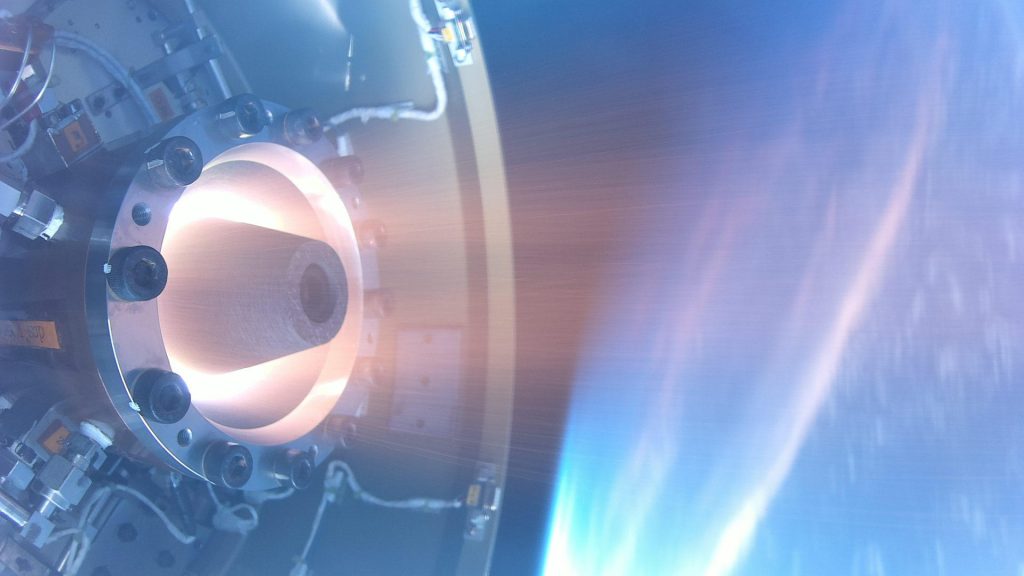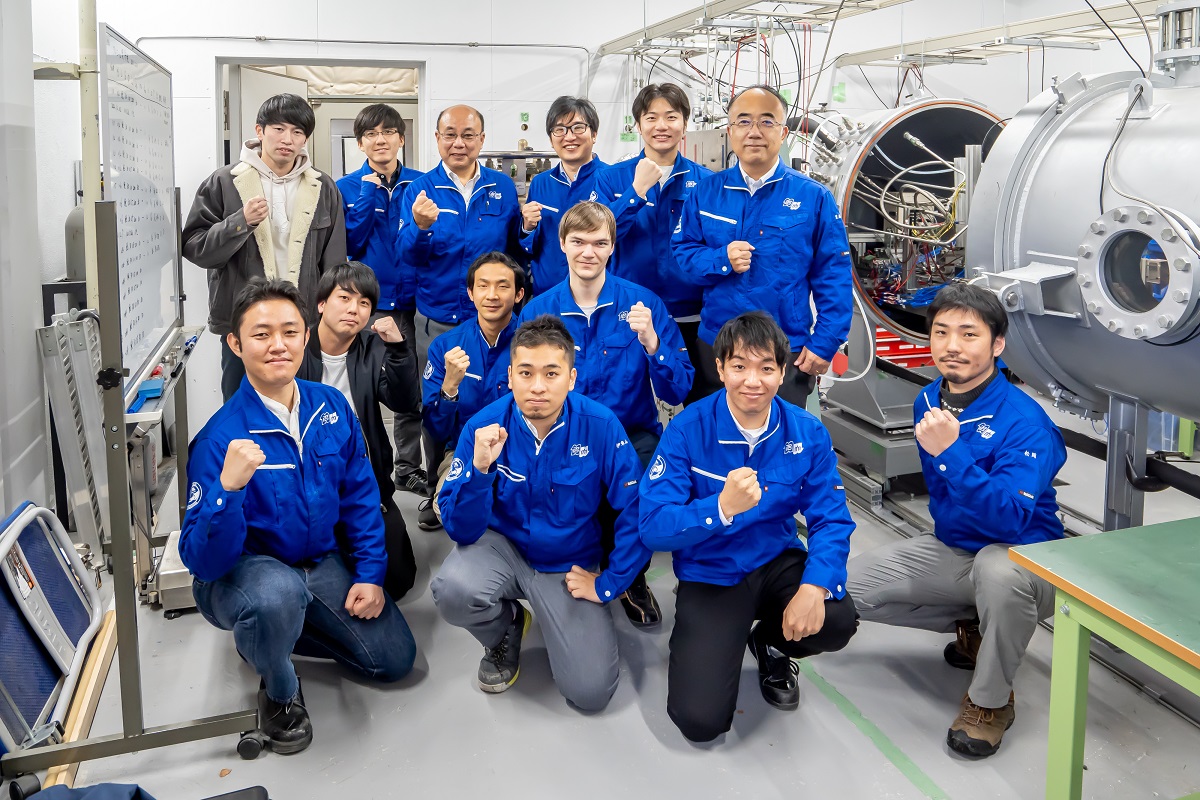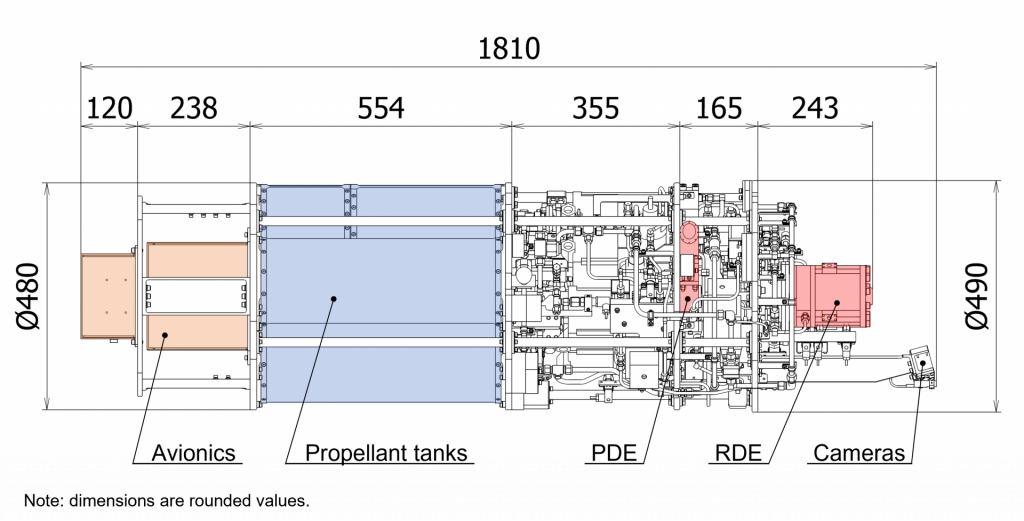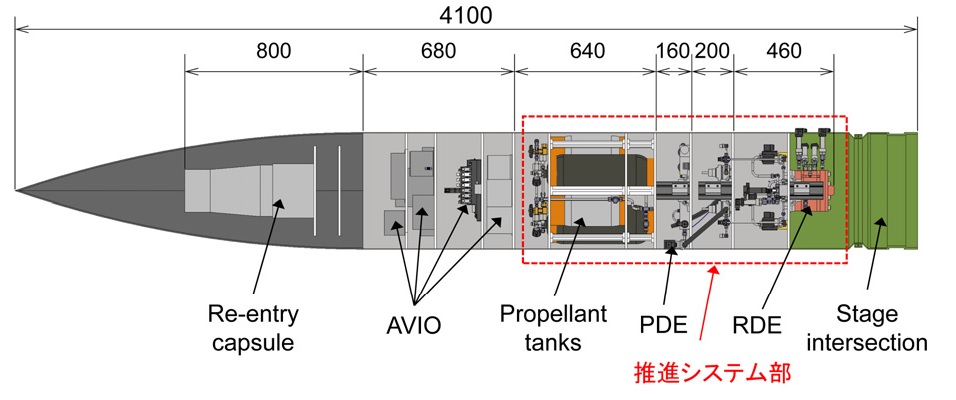“Five, four, three, two, one, zero (lift off!), one, two, three, …” The rocket goes straight up into the sky with a roar and a flash of light. The rocket has been successfully launched, and now the real challenges await! Will the ignition go well after the separation? Can we retrieve the observation data? What is the condition of the photos? We are nervous and excited…
The members of Kasahara Laboratory successfully demonstrated detonation engines in space flight at 5:30 am on July 27, 2021, from Japan Aerospace Exploration Agency (JAXA) Uchinoura Space Center located at Kimotsukicho, Kagoshima Prefecture, Japan. This was the world’s first successful space flight demonstration of detonation engines. A great deal of attention and expectations were placed on this project. We asked the project members about detonation engines and their roles and hopes for the demonstration engines.
| Why is it necessary to develop detonation engines? | |
| —– First of all, please tell us what the detonation engine system (DES) is.
Kasahara “Detonation” refers to the rapid combustion or combustion accompanying shock waves. A detonation engine safely and efficiently converts the strong shock waves generated by the fast reaction of the mixture of fuel and oxygen into thrust. In the space flight demonstration, we installed a DES consisting of two types of detonation engine on the rocket. One is the pulse detonation engine (PDE)*1 that can generate detonation waves at an interval of 1 second, and the other is the rotating detonation engine (RDE)*2 that rotates detonation waves in a annular cylinder to make them propagate and to maintain them. |
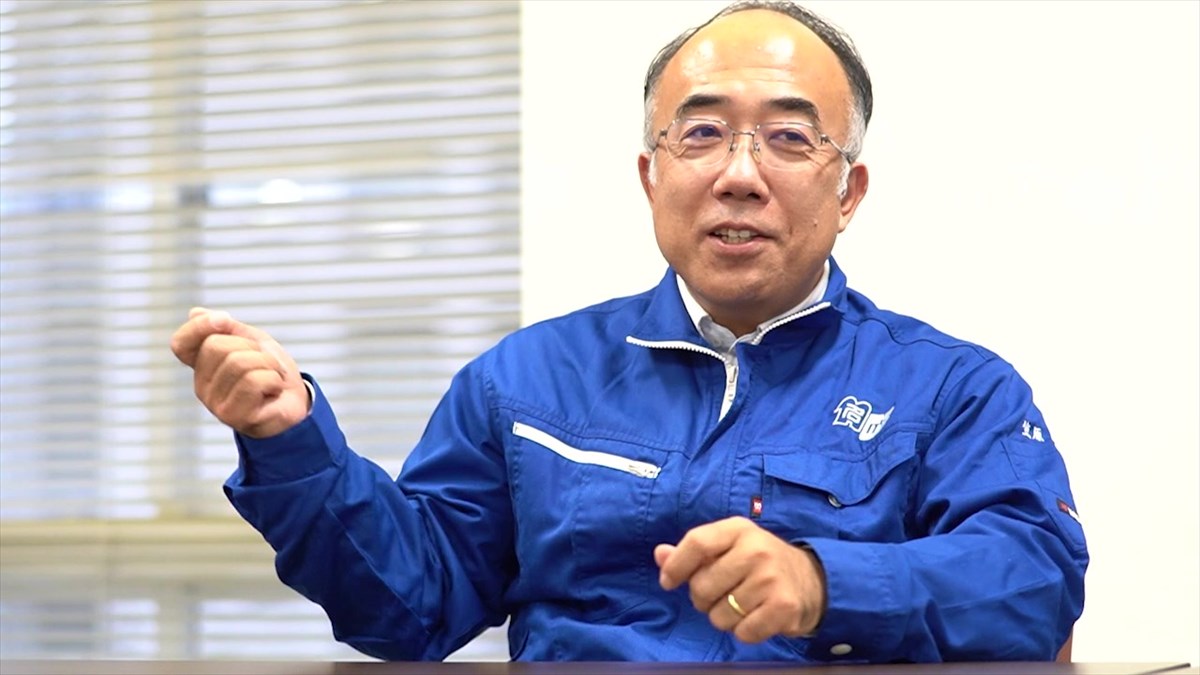 Professor Jiro Kasahara Professor Jiro Kasahara |
| —– Are those engines specialized for rockets?
Kasahara At this stage, yes. However, we are planning to apply them to jet engines and the combustors of power-generating turbines in the future. Because a detonation engine provides rapid combustion, two separate fields can be integrated. Namely, an engine in a turbine can burn fuel while driving the turbine. If this is realized, then it will lead to downsizing. Now, the jet engines are mounted on the wings, but they may be embedded into the wings. —– If that is realized, the air resistance will be reduced and the aircraft will become lighter. Kasahara Yes. Moreover, if you make something big, a large area is required. However, if the aerospace system becomes compact, its production site can also be downsized. I think the aerospace system may also be divided into components. A reduction in the size of individual packages and unitization are required in the aeronautics and astronautics industries. The effective use of detonation will enable further downsizing.
—– Why was a space flight demonstration required? Kasahara There are two main reasons. First, since the engines are fixed in the combustion test systems on the ground, the thrust in only one direction can be measured. Second, even if a vacuum chamber is used on the ground, the exhaust gas quickly accumulates inside the chamber and it cannot be maintained in a vacuum state. We cannot observe the engines firing in a vacuum. Space flight demonstration enables us to overcome these two limitations and we can obtain accurate data. —– What actually happened on the day of the rocket launch? Kasahara The weather was fair. The launch of the observation rocket S-520-31 took place at 5:30 am at dawn. The solid fuel rocket went higher and higher while exhausting gas for 20 seconds and then continued its inertial flight. The rocket was separated from the lower part of the solid fuel 60 seconds later and the RDE was activated 120 seconds later. Then, 240 seconds after the launch, the PDE was activated five times in succession at intervals of 30 seconds on three occasions. |
|
| Dependable “expert on rocket launch” | |
| —– We heard that Designated Professor Matsuyama is an expert on rocket launch.
Matsuyama I joined Mitsubishi Heavy Industries, Ltd., working initially on the development of electronic devices to control rocket engines, gradually becoming involved in the development of whole engines, and finally working as a project manager. I was involved in the development of rocket engines for about 20 years. Then I was assigned to the head office for a while, but my preference was still in engineering. Thus, I worked as the project manager of the launch of the spacecraft called H-II Transfer Vehicles (HTVs; Kounotori*3) for about seven years and was involved in launching four HTVs.
|
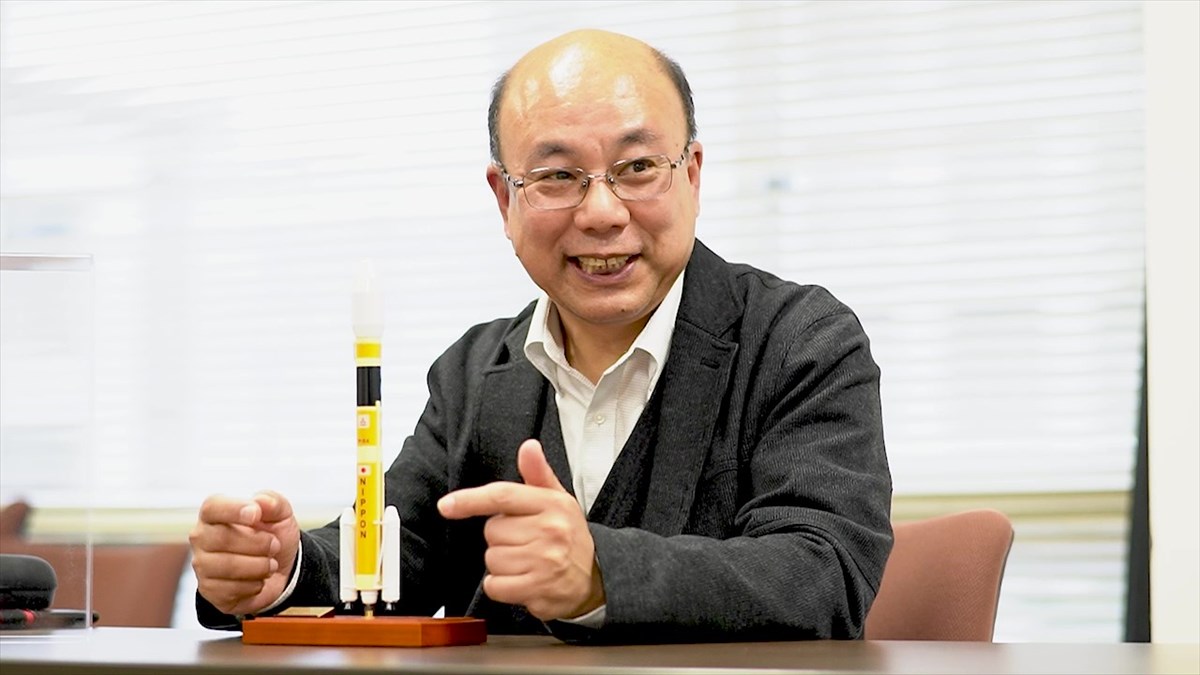 Designated Professor K. Matsuyama Designated Professor K. Matsuyama |
| —– How did you come to join this project?
Matsuyama Professor Kasahara developed detonation engines installed on a rocket, but he needed someone with knowledge of rockets to demonstrate it in space. When he was looking for such a person, a mutual friend happened to hear about it and this friend introduced Professor Kasahara to me. I joined his team in August 2019. I have been in charge of developing the electronic devices to collect the data on pressures and temperatures while controlling the operation of detonation engines. —– How did you retrieve such important data? Matsuyama In the case of ordinary rockets, the data are transmitted to the ground through radio waves via a device mounted on the rocket. JAXA developed the reentry and recovery module with deployable aeroshell technology for sounding rocket experiment (RATS) to retrieve a large amount of data in this demonstration. The RATS module was placed in the nose cone. The RATS separated from the rocket after the completion of the experiment, landed in the planned sea area, and was soon retrieved by a helicopter. When I arrived at Tanegashima Space Center where the recovery base was located (about 13:00 pm), the universal serial bus (USB) memory had already been removed from the RATS and was ready to be read. I received the USB memory, plugged it into a PC, and found that the data was read without any problems.
|
|
| Incorporating a perspective of chemistry into space engineering | |
| —– Designated Assistant Professor Noboru Itouyama, your specialization is not aerospace systems, is it?
Itouyama No. I developed professional expertise as a chemist. Since detonation is a hazardous condition where hazardous gas is used, I commented on the safety aspects of this demonstration from the perspective of a chemist and handled external risk factors, such as the material compatibility with gas, refining (removal of impurities from metal), friction, and static electricity, in an appropriate way. |
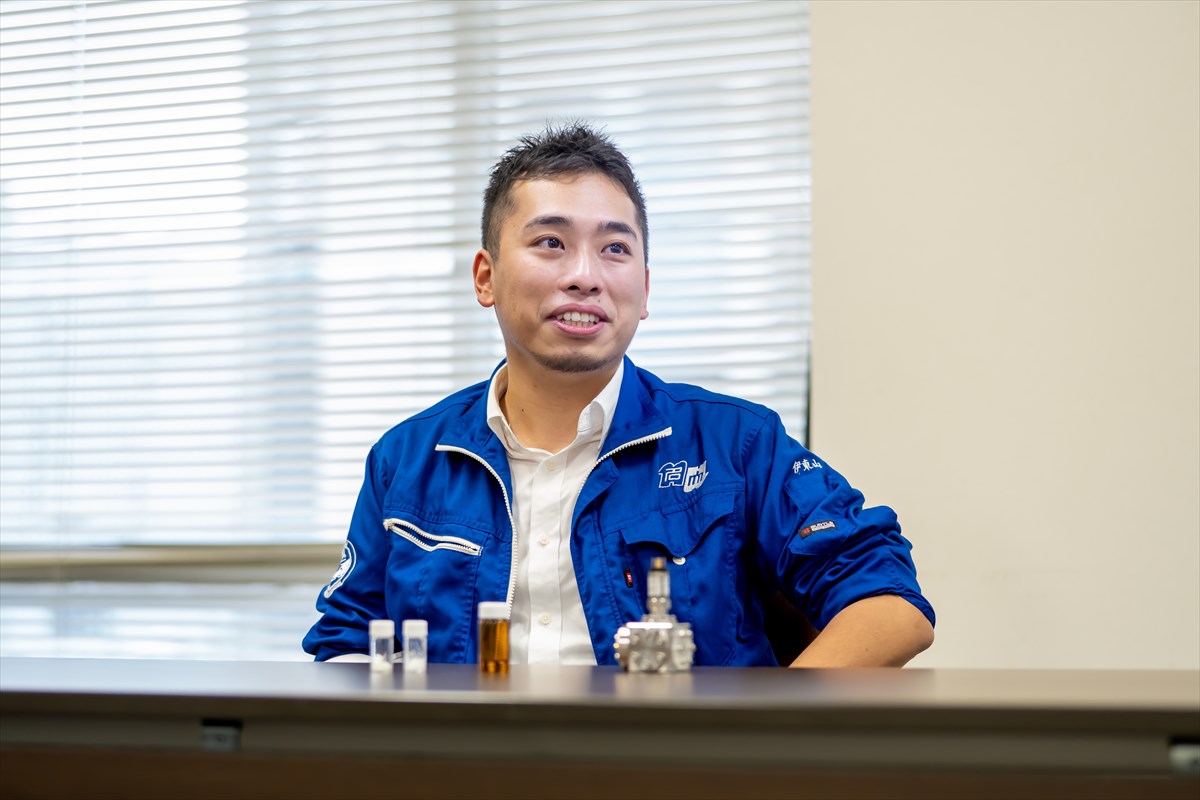 Designated Assistant Professor N. Itouyama Designated Assistant Professor N. Itouyama |
| —– What was difficult in the project?
Itouyama What was unexpectedly difficult was the adjustment of the interface used for installing our engines on the rocket developed by JAXA. We needed to look at drawings and determine if there were any problems with electrical connections. For example, we needed to check if the screws we manufactured fit the holes made by JAXA and to make adjustments as needed. Our engines cannot be installed if there is a gap of even 1 mm. Thus, we had a lot of meetings and experiments to check that everything was made in accordance with the drawings and whether the drawings were correct in the first place. —– Is the ignition of the trigger also the key? Itouyama Yes, it is. Ignition is also a chemical reaction. We had to determine why the reaction occurs and when it accelerates. On the basis of those findings, we can start figuring out how to develop fuels. If we find some important substances, then we can try using them. Here are the engine we are currently working on and the potential fuels for detonation.
|
|
| Team KASAHARA | |
| —– What was the biggest factor contributing to your success?
Kasahara I think the biggest factor was our good teamwork; you can see that we spent two years ensuring the robustness and thermal resistance of our engines again and again. All of us worked together for the success of the space flight demonstration. —– I wish I could hear much more about it, but lastly, I would like to ask you about plans for the next rocket. Kasahara We will first report on the results of this demonstration, but at the same time, we are already preparing for the next project, which we aim to realize in about two years. |
|
[Glossary]
*1 pulse detonation engine (PDE)
An apparatus that generates a detonation to produce high-pressure gas and obtains thrust as a reaction to the intermittent jet of the gas (in pulses). (back to main text)
*2 rotating detonation engine (RDE)
An apparatus that generates a detonation that continuously rotates at the bottom of an annular cylinder to produce high-pressure gas, generating thrust as a reaction to the gas jetted in the axial direction of the cylinder. (back to main text)
*3 Kounotori
A transfer vehicle developed by JAXA to transport supplies from the ground to the space station. The mission of Kounotori was to be launched by a rocket, fly in space by itself to reach the space station, dock with the space station, get unloaded, be loaded with no longer needed goods, undock from the space station, and return into the atmosphere to burn up and be scrapped. (back to main text)



